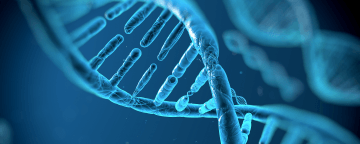Catherine Offord in The Scientist:
 Researchers at the University of Washington have discovered a novel DNA-sensing pathway that launches an antiviral response to foreign genetic material in human cells. Triggered by an enzyme called DNA protein kinase (DNA-PK), the newly found pathway is independent of the cGAS-STING pathway—until now considered the main regulator of mammalian innate immune responses to DNA—and is missing or inactive in mouse cells. The finding raises questions about the promise of therapies that target cGAS-STING for immune modulation, researchers report today (January 24) in Science Immunology. “This seems to be a DNA-sensing pathway that’s been completely overlooked—probably because much of the research that has been done has used murine systems,” says Christian Holm, who researches cGAS-STING at Aarhus University and was not involved in the study. Previous work on antiviral responses has focused almost exclusively on cGAS-STING, he adds. “Now this comes along and says there’s this other pathway . . . that seems to be completely independent of STING and might be very important.”
Researchers at the University of Washington have discovered a novel DNA-sensing pathway that launches an antiviral response to foreign genetic material in human cells. Triggered by an enzyme called DNA protein kinase (DNA-PK), the newly found pathway is independent of the cGAS-STING pathway—until now considered the main regulator of mammalian innate immune responses to DNA—and is missing or inactive in mouse cells. The finding raises questions about the promise of therapies that target cGAS-STING for immune modulation, researchers report today (January 24) in Science Immunology. “This seems to be a DNA-sensing pathway that’s been completely overlooked—probably because much of the research that has been done has used murine systems,” says Christian Holm, who researches cGAS-STING at Aarhus University and was not involved in the study. Previous work on antiviral responses has focused almost exclusively on cGAS-STING, he adds. “Now this comes along and says there’s this other pathway . . . that seems to be completely independent of STING and might be very important.”
First described in 2013, the cGAS-STING pathway plays a critical role in the cell’s innate immune reaction to viral infection. Upon detecting cytosolic DNA (usually a tell-tale sign of viral entry), the cGAS enzyme binds to the transmembrane protein STING to trigger the production of interferons and other antiviral responses.
More here.
